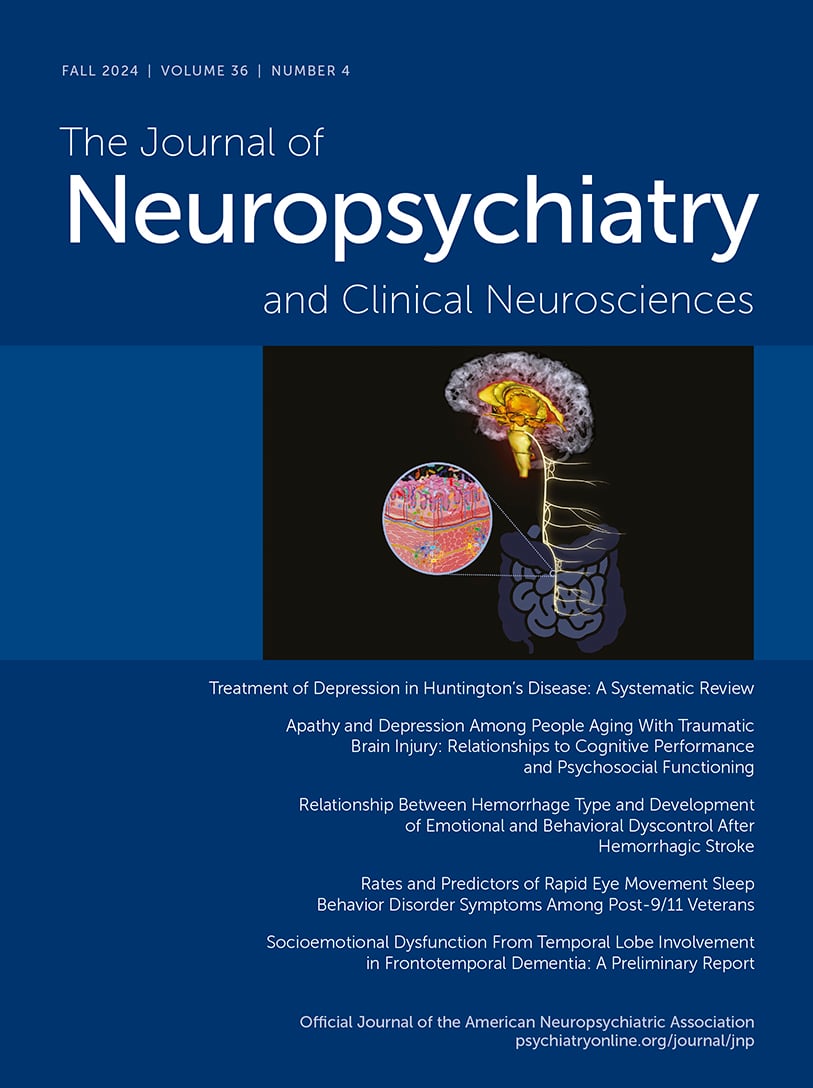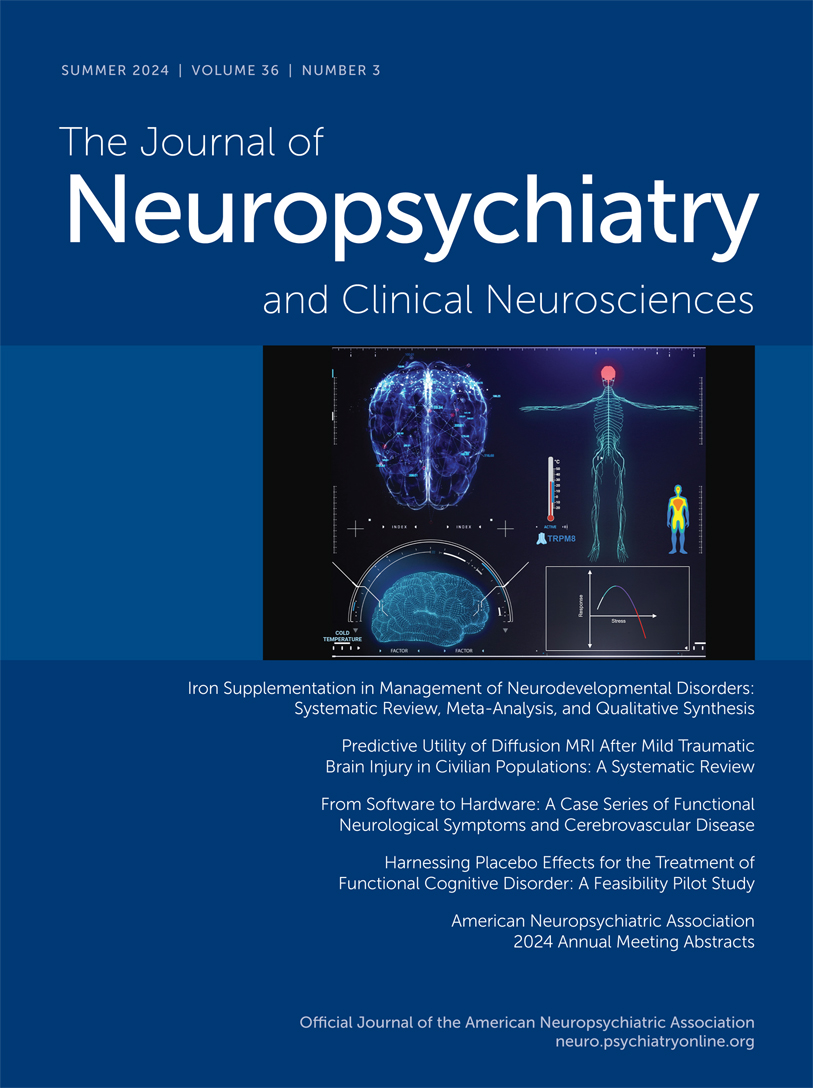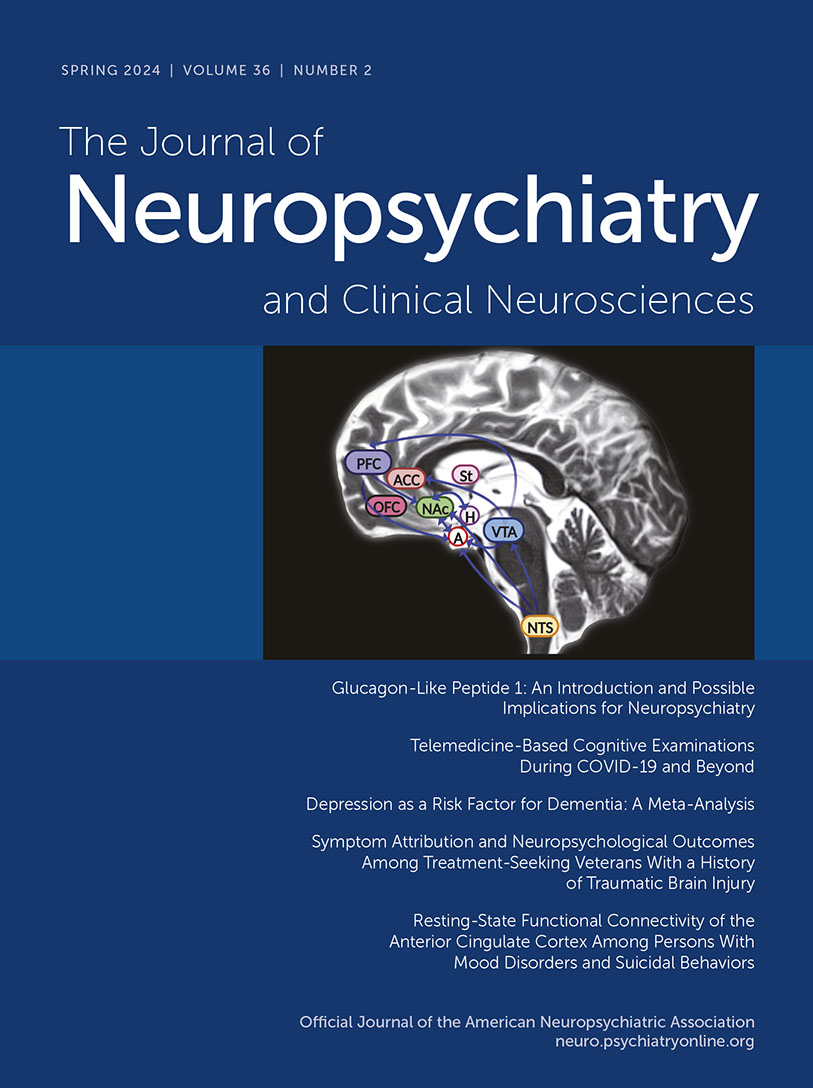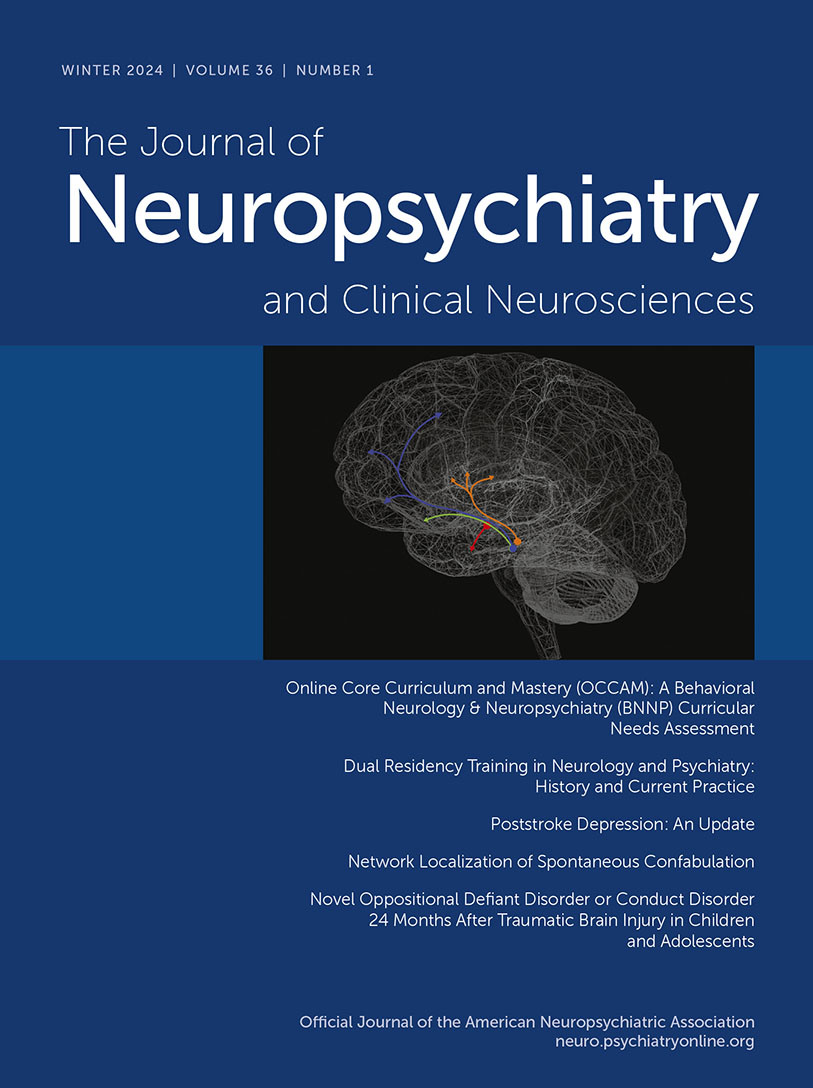The Journal of Neuropsychiatry and Clinical Neurosciences
- Volume 9
- Number 3
- August 1997
Article
Publication date: 01 August 1997
Pages315–330The limbic system is the border zone where psychiatry meets neurology. The authors provide a model of limbic function that combines phylogenetic, anatomic, functional, and clinical data to interpret diseases relevant to neuropsychiatry. They provide ...
https://doi.org/10.1176/jnp.9.3.315Publication date: 01 August 1997
Pages331–341The ventromedial temporal area has a complicated topography and neuroanatomy that has yielded secrets only grudgingly. The major features of surface topography are reviewed here as well as recent neuroanatomical findings that establish the ventromedial ...
https://doi.org/10.1176/jnp.9.3.331Publication date: 01 August 1997
Pages342–353Although the cerebral cortex is usually thought of as a likely substrate for psychiatric disease, the close relationship of thalamus to cortex, both structurally and functionally, argues for much closer consideration of this structure in both research and ...
https://doi.org/10.1176/jnp.9.3.342Publication date: 01 August 1997
Pages354–381This article highlights recent discoveries related to the accumbens and closely associated structures, with special reference to their importance in neuropsychiatry. The development of "striatal patches" in the accumbens is reviewed in a series of ...
https://doi.org/10.1176/jnp.9.3.354Publication date: 01 August 1997
Pages382–402Evidence from many different laboratories using a variety of experimental techniques and animal species indicates that the amygdala plays a crucial role in conditioned fear and anxiety, as well as attention. Many amygdaloid projection areas are critically ...
https://doi.org/10.1176/jnp.9.3.382Publication date: 01 August 1997
Pages403–419Patients who experience episodes with a transient disturbance in perception, memory, mood, and level of anxiety are frequently encountered by neurologists, psychiatrists, and psychologists. The possibilities for differential diagnosis of these episodes ...
https://doi.org/10.1176/jnp.9.3.403Publication date: 01 August 1997
Pages420–428Complex partial seizures and the auras that precede them are often manifestations of localized temporal lobe activity. Auras, unlike complex partial seizures, are reportable, since memory for them is retained. Similar experiences can be elicited by local ...
https://doi.org/10.1176/jnp.9.3.420Publication date: 01 August 1997
Pages429–438Neuropsychiatric symptoms are common manifestations of temporolimbic lesions. These neuropsychiatric symptoms result from disturbances of specific temporolimbic networks, including medial limbic circuits, lateral limbic circuits, and the "extended" ...
https://doi.org/10.1176/jnp.9.3.429Publication date: 01 August 1997
Pages439–448The author discusses a neurological model of a modular network that mediates emotional experience. According to this theory, emotional experience has three components: valence (positive and negative), arousal, and motor activation (approach, avoid, ...
https://doi.org/10.1176/jnp.9.3.439Publication date: 01 August 1997
Pages449–459The so-called recovery memory syndrome--reports by adults of recovered memories of childhood sexual abuse and trauma that were allegedly "repressed" for many years--has become an important issue in the field of mental health. In particular, there is ...
https://doi.org/10.1176/jnp.9.3.449Publication date: 01 August 1997
Pages460–470Evidence from diverse avenues of research has highlighted abnormalities in the anatomy, physiology, and function of medial temporal lobe structures in schizophrenia. Clinical similarities between schizophrenia and psychotic disorders associated with ...
https://doi.org/10.1176/jnp.9.3.460Publication date: 01 August 1997
Pages471–481A working model of depression implicating failure of the coordinated interactions of a distributed network of limbic-cortical pathways is proposed. Resting state patterns of regional glucose metabolism in idiopathic depressed patients, changes in ...
https://doi.org/10.1176/jnp.9.3.471Publication date: 01 August 1997
Pages482–497Animals models have begun to provide insights into the neurobiological basis of reinforcement in drug addiction. The reinforcing effects of indirect sympathomimetics such as cocaine and amphetamine appear to depend on release of dopamine in the terminal ...
https://doi.org/10.1176/jnp.9.3.482Publication date: 01 August 1997
Pages498–510Religious experience is brain-based, like all human experience. Clues to the neural substrates of religious-numinous experience may be gleaned from temporolimbic epilepsy, near-death experiences, and hallucinogen ingestion. These brain disorders and ...
https://doi.org/10.1176/jnp.9.3.498Past Issues
View Issues Archive
Vol. 36 | No. 4

Vol. 36 | No. 3

Vol. 36 | No. 2
